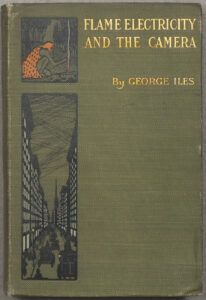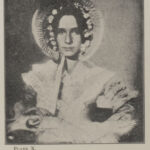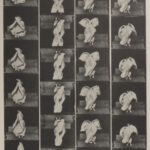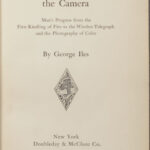The nineteenth century teemed with technological developments, and the enthusiasm of the age shines forth in the introduction to Flame, Electricity and the Camera: “As we hear the whir of the dynamo or listen at the telephone, as we turn the button of an incandescent lamp or travel in an electromobile, we are partakers in a revolution more swift and profound than has ever before been enacted upon earth.”
Published in 1900 — at the close of a century that witnessed the Industrial Revolution, the advent of electric power, and the development of photography — Iles’ book looks back on the waning century’s immense and rapid progress, as he attempts to answer the question,“Why has the nineteenth century added more to science than all preceding time?” This has a familiar ring, of course. We find ourselves posing similar questions in the 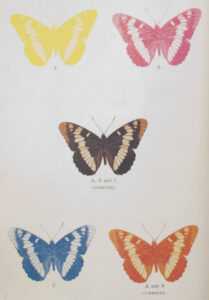 present day, as we develop progressively faster, smaller, and more powerful electronic devices, and as thinkers explore the possibility of an eventual “technological singularity.”
present day, as we develop progressively faster, smaller, and more powerful electronic devices, and as thinkers explore the possibility of an eventual “technological singularity.”
As Flame, Electricity and the Camera makes clear, rapid technological acceleration is nothing new: “It is commonly imagined that the progress of humanity has been at a tolerably uniform pace. Our review of that progress will show that here and there in its course have been leaps, as radically new forces have been brought under the dominion of man.”

George Iles (1852-1942), wrote for Popular Science Monthly (to which MIT subscribed) on various subjects including geometry, the art of running successful scientific meetings, physics, heredity, economics, and insurance. Here too he tackles a number of hot topics in order to create an exciting reading experience for the layman, as he covers, in broad strokes, the histories of electricity, photography, and electrical and wireless telegraphy, and as he examines the impact of each on daily life at the turn of a tumultuous century.

